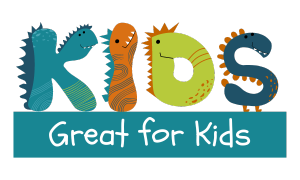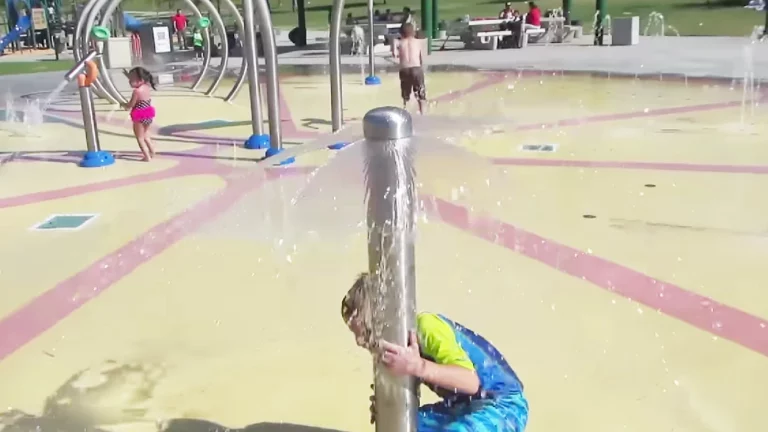What are the Must-have Outdoor Toys for Toddlers 1-3 Years Old?
Discover the key to endless giggles, boundless energy, and a whole lot of fun with the must-have outdoor toys for toddlers aged 1-3.
From sand and water play tables to ride-on toys and bubble machines, these essentials are sure to spark joy in your little one’s eyes and keep them entertained for hours on end.
What are the must-have outdoor toys for toddlers 1-3
Must-Have Outdoor Toys for Toddlers Aged 1-3 include sand and water play tables, ride-on toys like scooters and tricycles, climbing structures such as tunnels and small slides, playhouses or tents for imaginative play, bubble machines and outdoor bubble wands, ball pits or inflatable pools, push toys like lawnmowers or strollers, and chalk and sidewalk paint for art and creativity.
Key Points:
- Sand and water play tables
- Ride-on toys like scooters and tricycles
- Climbing structures such as tunnels and small slides
- Playhouses or tents for imaginative play
- Bubble machines and outdoor bubble wands
- Push toys like lawnmowers or strollers
Check this out:
Sand And Water Play Tables
Sand and water play tables are a favorite among toddlers as they provide endless opportunities for sensory play and exploration. These tables typically come with compartments for sand and water, allowing children to scoop, pour, and build to their heart’s content. They promote tactile stimulation, hand-eye coordination, and social interaction as kids engage in cooperative play.
Furthermore, sand and water play tables can be educational, with parents incorporating:
- Counting games
- Color recognition
- Different textures for learning opportunities
These versatile toys are perfect for outdoor play and can keep toddlers occupied for hours on end.
“Sand and water play tables offer a wide range of benefits for toddlers, from sensory play to educational opportunities. They enhance tactile stimulation and social interaction through cooperative play, making them an ideal choice for outdoor activities.”
Ride-On Toys Like Scooters And Tricycles
Ride-on toys such as scooters and tricycles are excellent for toddlers to practice balance and coordination while having fun outdoors. These toys help develop gross motor skills and are a great way for children to explore their surroundings independently. Toddlers can zoom around the yard, improving their spatial awareness and building confidence as they master the art of riding.
Choosing age-appropriate ride-on toys is crucial to ensure safety and enjoyment. Look for:
- Sturdy construction
- Easy-to-grasp handles
- Stable wheels
Encouraging physical activity through ride-on toys is essential for promoting a healthy lifestyle from a young age.
Climbing Structures: Tunnels And Small Slides
Climbing structures, such as tunnels and small slides, are perfect for toddlers who love to climb, slide, and explore. These toys provide opportunities for physical activity and help strengthen muscles while enhancing balance and coordination. Climbing structures also support cognitive development as children navigate obstacles and solve problems.
Indoor-outdoor playsets that incorporate tunnels, slides, and climbing walls offer a variety of activities in one compact unit. Toddlers can enjoy endless adventures, whether they are crawling through tunnels, sliding down slides, or conquering climbing walls. These structures promote social play and teamwork as children engage in group activities.
Benefits of Climbing Structures for Toddlers:
- Enhance physical activity
- Strengthen muscles
- Promote cognitive development
- Encourage social play and teamwork
Playhouses Or Tents For Imaginative Play
Playhouses or tents are essential for fostering imaginative play and creativity in toddlers aged 1-3. These miniature structures provide a cozy space for children to engage in pretend play, acting out scenarios, and creating imaginary worlds. Playhouses encourage language development as toddlers narrate their stories and interact with peers.
From hosting tea parties to playing house, toddlers can let their imagination run wild in a playhouse or tent. These toys offer a sense of independence as children have their own space to play and unwind. Parents can enhance the play experience by adding props, costumes, and themed decorations to inspire imaginative storytelling.
Bubble Machines And Outdoor Bubble Wands
Bubble machines and outdoor bubble wands are sure to captivate toddlers with their magical, shimmering bubbles floating through the air. These toys offer sensory stimulation and visual delight as children chase and pop bubbles in the great outdoors. Bubble play promotes hand-eye coordination and encourages active play.
Outdoor bubble play is not only fun but also therapeutic, providing a calming effect as toddlers focus on capturing bubbles in the breeze. Bubble machines come in various sizes and designs, from handheld wands to automatic bubble blowers, catering to different preferences. Whether toddlers are playing solo or with friends, bubble toys bring joy and laughter to outdoor playtime.
Ball Pits Or Inflatable Pools
- Ball pits or inflatable pools are perfect for toddlers to engage in sensory play and water fun outdoors. These toys provide a safe and contained environment for toddlers to splash, play with water toys, or dive into a pool of colorful balls. Ball pits stimulate tactile senses and encourage exploratory play.
- Inflatable pools offer a refreshing way for toddlers to cool off on hot days while developing water confidence and motor skills. Ball pits, filled with soft balls, provide a cushioned surface for toddlers to jump, roll, and dive into, promoting physical activity and coordination. These toys can be easily set up in your backyard for hours of splashing and laughter.
Push Toys: Lawnmowers Or Strollers
Push toys like lawnmowers or strollers are great for toddlers to engage in role-playing and pretend play while staying active outdoors. These toys mimic real-life objects, allowing children to imitate adults and explore their environment. Push toys promote language development as toddlers engage in storytelling and imaginative scenarios.
Lawnmowers that emit realistic sounds and strollers with interactive features enhance the play experience, sparking curiosity and creativity in toddlers. Push toys encourage physical activity as children push, steer, and maneuver the toy around the yard. These toys also promote social skills as toddlers engage in parallel play with their peers.
Chalk And Sidewalk Paint For Creativity
Chalk and sidewalk paint are essential for unleashing toddlers’ artistic abilities and creativity outdoors. These art supplies allow children to express themselves through drawing, coloring, and pattern-making on driveways, sidewalks, or outdoor walls. Chalk and sidewalk paint promote fine motor skills and hand-eye coordination.
Toddlers can create vibrant masterpieces or engage in collaborative art projects with friends and family using chalk and sidewalk paint. These art supplies are washable and easily removable, making clean-up a breeze after a fun art session. Encouraging artistic expression through chalk and sidewalk paint nurtures toddlers’ creativity and imagination.
In conclusion, providing toddlers aged 1-3 with a variety of outdoor toys is essential for their physical, cognitive, and emotional development. From sensory-rich activities like sand and water play to imaginative play with playhouses, each toy offers unique benefits for toddlers. By incorporating these must-have outdoor toys into your child’s playtime routine, you can create a fun and engaging outdoor environment that supports their growth and learning.
- Chalk and sidewalk paint unleash artistic abilities outdoors.
- Encourages fine motor skills and hand-eye coordination.
- Promotes artistic expression and fosters creativity in toddlers.
FAQ
What toys should a 2 year old have?
At two years old, a child should have toys that encourage imaginative and creative play, as well as help develop their fine motor skills. Toys such as a play kitchen or tool table can provide hours of entertainment and mimic real-life scenarios. Quiet corner tents offer a cozy and calming space for children to retreat to and engage in quiet play activities.
Building tools and art supplies can help foster a child’s creativity and spatial awareness. Introducing little world toys allows for exploration of different environments and promotes storytelling. Puzzles, flap books, and busy boards are great for cognitive development and problem-solving skills. Having a variety of toys that cater to different interests and learning styles can provide a well-rounded play experience for a 2-year-old.
How many toys should you have out for a 1 year old?
For a one-year-old, having around 5-10 toys that cater to different developmental needs and promote sensory exploration is ideal. Toys that promote fine and gross motor skills, early learning, and sensory stimulation can offer a well-rounded play experience for a one-year-old.
Having a selection of toys like stacking rings, shape sorters, and push toys can provide a good balance of engagement and learning opportunities for a one-year-old. With a focused collection of toys that cater to various developmental aspects, a one-year-old can have a fulfilling playtime experience that supports their growth and learning.
Which toy is most appropriate for a 3 year old child?
For a 3-year-old child, a great toy to encourage active play and interaction with others would be a set of building blocks. This toy not only allows the child to engage in physical activity by moving around and building structures but also promotes creativity and socialization. By building together with others, children can learn to share and collaborate in a fun and engaging way.
Another appropriate toy for a 3-year-old would be a doll, as it encourages nurturing and imaginative play. Dolls can help children develop empathy and communication skills as they role-play different scenarios with their doll. Through playing with dolls, children can learn about caring for others and expressing emotions, fostering social development in a gentle and enjoyable manner.
How many toys should a toddler have access to?
It is recommended to provide a toddler with access to about 12 toys, depending on the size of the play space and the complexity of each toy. It is important not to overwhelm the child with too many options, as a moderate number of toys allows for better focus, engagement, and creativity during playtime. By keeping the selection of toys varied but manageable, a toddler can fully explore and benefit from each item without feeling overwhelmed.
💡 Did You Know?
1. Did you know that bounce houses were originally invented by NASA engineer John Scurlock in 1959 as a new method of testing the effects of weightlessness on astronauts?
2. The iconic red and yellow Little Tikes Cozy Coupe, a popular outdoor toy for toddlers, was designed by Jim Mariol, a former employee of the Fisher-Price toy company.
3. Sandbox play has been found to improve a toddler’s cognitive and motor skills, as the sensory experience of playing with sand can enhance their creativity and problem-solving abilities.
4. The Radio Flyer wagon, a classic outdoor toy for toddlers, was first produced in 1917 by Italian immigrant Antonio Pasin, who named it after his fascination with both radio and flights.
5. Outdoor play with toys like tricycles and balance bikes has been linked to the development of a toddler’s sense of balance, coordination, and spatial awareness, crucial skills that lay the foundation for future physical activities.

